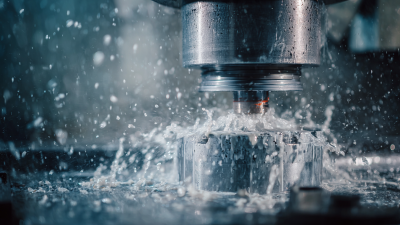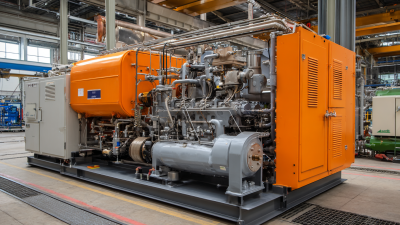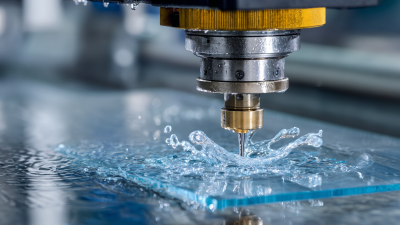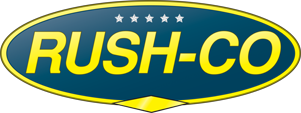Understanding the Benefits of Jet Cut Technology in Modern Manufacturing
In the rapidly evolving landscape of modern manufacturing, the adoption of advanced technologies is crucial for enhancing productivity and precision. Among these innovations, jet cut technology stands out as a transformative method that employs high-pressure jets to cut materials with unparalleled accuracy. According to a report by MarketsandMarkets, the global water jet cutting market is projected to grow from $1.5 billion in 2020 to $2.4 billion by 2025, highlighting the increasing reliance on jet cutting systems across various industries. This surge is driven by the technology's ability to reduce waste, improve edge quality, and enable the processing of a wider range of materials, including metals, plastics, and glass. As manufacturers seek to optimize their operations and meet the rising demand for high-quality products, understanding the benefits of jet cut technology becomes essential for staying competitive in today’s market.

Advantages of Jet Cut Technology in Precision Manufacturing
Jet Cut Technology has revolutionized precision manufacturing by offering a range of advantages that enhance efficiency and effectiveness. According to a report by the International Journal of Advanced Manufacturing Technology, jet cutting processes are capable of achieving tolerances as tight as ±0.005 inches. This level of precision is crucial for industries such as aerospace and automotive, where even the slightest deviation can lead to significant safety and performance issues.
One of the standout benefits of jet cut technology is its versatility with various materials. A study from SME (Society of Manufacturing Engineers) highlights that jet cutting can effectively handle an array of materials, including metals, plastics, ceramics, and composites, without altering their inherent properties. This adaptability allows manufacturers to streamline their operations by using a single cutting method for different materials, reducing the risk of contamination and subsequent rework. Additionally, the non-contact nature of jet cutting minimizes material waste, adhering to sustainability goals while also supporting cost-effective production processes.
Enhancing Material Efficiency with Jet Cutting Processes
The use of jet cutting technology in modern manufacturing has become increasingly significant due to its ability to enhance material efficiency. By utilizing high-pressure water jets or abrasive substances, jet cutting creates precise cuts with minimal waste. This precision allows manufacturers to maximize the utilization of raw materials, reducing the cost per unit and minimizing the environmental impact associated with material disposal.

Moreover, jet cutting processes are versatile, capable of working with a wide range of materials, including metals, plastics, and glass. This adaptability not only broadens the spectrum of applications but also facilitates tailored manufacturing solutions for various industries. As manufacturers seek sustainable practices, adopting jet cutting technology contributes to a more efficient production model by optimizing the use of materials, ultimately driving down costs while promoting eco-friendliness in production processes.
Comparative Analysis: Jet Cut Technology vs. Traditional Cutting Methods
Jet cut technology has revolutionized the manufacturing landscape by offering a precise and efficient alternative to traditional cutting methods. Unlike mechanical cutting techniques that rely on physical force and may result in unwanted material stress or deformation, jet cutting utilizes high-pressure water or abrasive jets to achieve clean and intricate cuts. This method minimizes thermal and mechanical impact, allowing for the processing of diverse materials with a high degree of accuracy and reduced waste.
When comparing jet cut technology to traditional methods such as laser or saw cutting, several advantages become evident. Jet cutting is particularly effective for thicker materials and complex geometries, which can pose challenges for conventional techniques. Furthermore, the absence of heat drastically reduces the risk of material warping, ensuring a higher quality finish. Additionally, because jet cutting leaves no burrs or rough edges, it often eliminates the need for secondary processing, streamlining the manufacturing workflow and enhancing overall productivity. These distinctions highlight the growing preference for jet cut technology in industries where precision and efficiency are paramount.
Understanding the Benefits of Jet Cut Technology vs. Traditional Cutting Methods
This chart compares the efficiency, precision, and cost-effectiveness of Jet Cut Technology against Traditional Cutting Methods.
Integrating Jet Cut Technology with Industry 4.0 Innovations
Integrating Jet Cut Technology with Industry 4.0 Innovations presents numerous opportunities for modern manufacturing, particularly in enhancing efficiency and precision. The incorporation of advanced jet cutting techniques enables manufacturers to achieve complex designs with less material waste, thereby reducing costs. As Industry 4.0 continues to revolutionize manufacturing processes through the Internet of Things (IoT) and real-time data access, jet cut technology can seamlessly interact with smart machines to optimize production lines. According to recent industry reports, the CNC machine market is projected to expand at a CAGR of 5.5%, highlighting the demand for more precise automated cutting technologies.
However, these advancements come with challenges that industries must navigate. The integration of jet cutting technology requires significant upfront investment and skilled labor capable of operating sophisticated machinery. Moreover, ensuring cybersecurity to protect interconnected manufacturing systems is paramount. As the manufacturing landscape evolves, companies must stay abreast of emerging technologies while addressing these potential hurdles.
**Tips:**
- Invest in training programs for employees to bridge the skills gap in operating new technologies.
- Conduct thorough risk assessments to identify and mitigate cybersecurity threats in integrated systems.
- Explore partnerships with technology providers to ease the transition to Industry 4.0 capabilities.
Understanding the Benefits of Jet Cut Technology in Modern Manufacturing - Integrating Jet Cut Technology with Industry 4.0 Innovations
| Dimension | Description | Advantages | Integration with Industry 4.0 |
|---|---|---|---|
| Precision Cutting | Jet Cut technology provides high precision in cutting materials. | Reduces waste, improves quality, and enhances production efficiency. | Compatible with smart sensors for real-time monitoring. |
| Material Versatility | Able to cut a wide range of materials including metals, plastics, and composites. | Increases flexibility in manufacturing processes. | Easily integrated with material handling robots. |
| Reduced Heat Affected Zone (HAZ) | Minimizes thermal distortion and changes in the material properties. | Leads to higher quality finishes and less rework. | Connected to predictive maintenance systems. |
| Automation Capabilities | Operators can automate cutting processes for efficiency. | Lowers labor costs and reduces human error. | Data analytics can optimize cutting paths and processes. |
| Customization | Enables custom shapes and designs to be created easily. | Meets specific client needs and enhances product offerings. | Facilitates integration with design software for seamless workflows. |
Future Trends: Jet Cut Technology's Role in Sustainable Manufacturing Practices
The shift towards sustainable manufacturing practices is becoming increasingly critical, and jet cut technology plays a pivotal role in this evolution. As industries face mounting pressure to reduce their carbon footprint, jet cut technology offers a solution by enabling more precise and efficient cutting processes. According to a recent industry report, companies that implemented advanced cutting technologies, such as jet cutting, experienced a reduction in material waste by up to 30% and improved energy efficiency by approximately 20%. This not only enhances operational effectiveness but also supports a broader commitment to sustainability.
Furthermore, as the demand for sustainable biofuels grows, innovative practices, including the use of microalgae, are being explored in tandem. These advanced biotechnologies can be integrated with jet cut technology to optimize biofuel production through precise biomass processing. Research indicates that the global biofuel market is projected to reach USD 218.7 billion by 2025, highlighting an urgent need for manufacturing technologies that can handle bio-based materials efficiently. By integrating jet cut technology into biofuel generation processes, manufacturers can enhance productivity while adhering to sustainable practices, responding effectively to both consumer demands and regulatory pressures.

Related Posts
-

The Future of Precision Manufacturing with Waterjet Cutting Technology in Utah
-

The Future of Cutting Technologies Exploring the Benefits of Water Jet Abrasive Systems
-

Understanding the Benefits of Water Jet Cutting Machines in Modern Manufacturing
-

Maximize Precision and Efficiency with Local Water Jet Cutting: The Future of Material Processing
-

The Ultimate Guide to Choosing the Right Disk Mower for Your Lawn Care Needs
-

Exploring the Benefits of Water Jet Cutting for Precision Stainless Steel Fabrication

